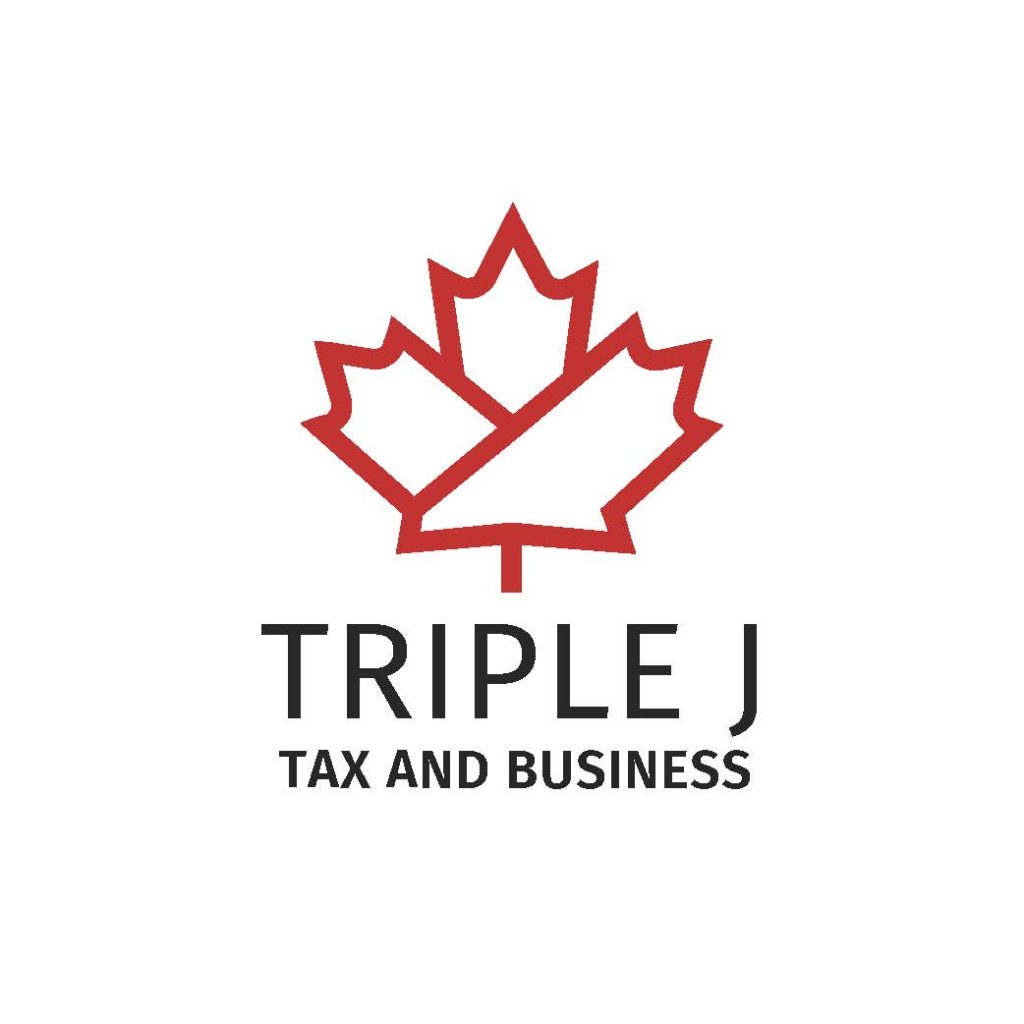Starting and managing a business in Ontario requires more than just an entrepreneurial mindset—it demands a solid financial foundation. Setting up your business finances correctly is not only a legal necessity but also a strategic move that ensures long-term growth and sustainability.
Introduction to Setting Up Business Finances
Why Proper Financial Setup Matters
A strong financial setup acts as the backbone of any successful business. It ensures you can track income, manage expenses, meet regulatory requirements, and make informed decisions. Neglecting financial organization can lead to cash flow issues, tax penalties, and missed growth opportunities.
Key Benefits of Proper Financial Setup:
- Simplifies tax filing and ensures compliance with CRA regulations.
- Builds trust with clients, investors, and financial institutions.
- Enables better forecasting and financial planning.
On the other hand, businesses with disorganized finances face risks such as poor cash flow, missed deadlines, and even legal complications. Avoiding these pitfalls starts with setting up your finances the right way from the beginning.
Understanding Financial Needs Based on Business Types
The financial requirements of a business often depend on its structure. In Ontario, the most common business types are sole proprietorships, partnerships, and corporations, each with unique financial considerations.
- Sole Proprietorship:
This is the simplest business structure, where the owner and the business are considered the same entity.
- Financial Needs: Minimal setup, but personal and business finances must be tracked separately for tax purposes.
- Partnership:
A partnership involves two or more individuals sharing ownership.
- Financial Needs: Clear agreements on financial responsibilities and profit-sharing, along with a joint business account for transparency.
- Corporation:
Incorporating separates the business as a legal entity, offering liability protection.
- Financial Needs: More complex financial management, including corporate taxes, payroll, and shareholder reporting.
Pro Tip: Consult an accountant to ensure your financial setup aligns with your business structure and goals.
Choosing the Right Financial Tools and Accounts
Once your business structure is determined, the next step is equipping yourself with the right tools and accounts to manage finances efficiently.
Opening a Business Bank Account
Separating personal and business finances is critical for accurate record-keeping and tax compliance. A dedicated business account simplifies transactions, reduces errors, and builds credibility with clients and partners.
Why You Need a Business Bank Account:
- Streamlines tracking of business income and expenses.
- Makes it easier to prove business deductions during tax filing.
- Enhances professionalism by allowing transactions under your business name.
How to Choose the Right Account:
- Compare Features and Fees: Look for accounts with low transaction fees, minimal monthly charges, and features like overdraft protection.
- Consider Online Banking Options: Ensure the account supports online payments, mobile deposits, and integrations with accounting software.
- Ask About Credit Lines: Some banks offer business credit cards or lines of credit tied to your account, which can be useful for managing cash flow.
Pro Tip: Major banks in Ontario, such as RBC, TD, and CIBC, offer business accounts tailored to small and medium-sized businesses.
Selecting Financial Software and Tools
Managing finances manually is a thing of the past. Automation is your ally when it comes to handling bookkeeping, invoicing, and tax calculations.
Recommended Accounting Tools for Ontario Businesses:
- QuickBooks Online: Ideal for small to medium-sized businesses, offering features like invoicing, expense tracking, and tax calculation.
- Wave Accounting: A free tool for small businesses, perfect for basic accounting needs.
- Xero: A scalable option for growing businesses, offering payroll and multi-currency support.
Key Benefits of Automation:
- Saves time by automating repetitive tasks like generating invoices and reconciling bank accounts.
- Reduces human errors, ensuring accurate records and calculations.
- Provides real-time financial insights to help you make informed decisions.
Setting Up Payment Systems
To serve customers efficiently, you’ll need a reliable system to process payments. Whether you’re running a physical storefront or an online business, the right payment system ensures smooth transactions and customer satisfaction.
Popular Payment Options in Ontario:
- Point of Sale (POS) Systems: Tools like Square or Clover are excellent for retail and service-based businesses.
- Online Payment Gateways: Platforms like Stripe, PayPal, or Shopify Payments are perfect for e-commerce businesses.
- Direct Bank Transfers: Useful for B2B transactions or high-value sales.
How to Choose the Right Payment System:
- Consider your customer base and their preferred payment methods.
- Evaluate transaction fees and integration capabilities.
- Ensure the system complies with Canadian security standards, such as PCI DSS.
Pro Tip: Many payment processors offer additional features like inventory tracking and sales analytics, which can streamline operations.
Equipped with the right financial tools and accounts, your business will be well-positioned to handle daily transactions, track performance, and prepare for growth.
How to Set Up Your Business Finances Correctly in Ontario
Managing Taxes and Regulatory Compliance
Taxes and regulatory compliance are often considered the most challenging aspects of running a business, but they don’t have to be overwhelming. By understanding your tax obligations and implementing systems to stay compliant, you can avoid penalties and maintain smooth operations.
Understanding Tax Obligations in Ontario
Every business in Ontario has specific tax responsibilities, depending on its structure and operations. Failing to meet these obligations can result in fines, audits, or even legal repercussions.
Key Taxes for Ontario Businesses:
- Income Tax
- Sole proprietors report business income on their personal tax returns.
- Corporations must file separate corporate tax returns.
- HST/GST (Harmonized Sales Tax/Goods and Services Tax)
- Businesses with annual revenue over $30,000 must register for HST/GST.
- The standard rate in Ontario is 13%.
- Payroll Taxes
- Employers are responsible for deducting CPP, EI, and income tax from employee wages and remitting them to the CRA.
- Other Provincial Taxes
- Depending on your business type, you may also be subject to specific provincial taxes, such as the Employer Health Tax (EHT).
Staying CRA-Compliant
Maintaining compliance with the CRA is essential to avoid fines and audits. Proactive measures and accurate reporting are your best defenses.
Tips for Staying CRA-Compliant:
- Keep Detailed Records: Retain all invoices, receipts, and financial records for at least six years, as required by the CRA.
- Use Accounting Software: Automating calculations reduces errors and ensures accurate filings.
- Meet Filing Deadlines: Mark key tax deadlines on your calendar or use reminders in accounting software to stay on track.
Common Mistakes to Avoid:
- Underreporting income or overstating expenses.
- Missing HST/GST filing deadlines.
- Forgetting to remit payroll deductions.
Pro Tip: Hire a professional accountant to ensure your tax filings are accurate and compliant. They can also help identify potential deductions and credits.
Claiming Deductions and Credits
Ontario businesses can significantly reduce their tax liabilities by taking advantage of eligible deductions and credits.
Popular Tax Deductions for Businesses:
- Office expenses, including rent, utilities, and supplies.
- Vehicle expenses, if used for business purposes.
- Marketing and advertising costs.
- Professional fees, such as accounting or legal services.
Government Credits to Explore:
- Small Business Deduction (SBD): A lower tax rate for Canadian-controlled private corporations (CCPCs).
- Scientific Research and Experimental Development (SR&ED) Tax Credit: For businesses investing in innovation.
- Apprenticeship Job Creation Tax Credit: For businesses hiring apprentices in certain trades.
Pro Tip: Keep detailed documentation to support your claims, as the CRA may request proof during audits.
Building a Budget and Cash Flow Plan
A well-constructed budget and cash flow plan provide the roadmap for financial stability and growth. They help you allocate resources effectively, prepare for unexpected expenses, and ensure your business remains financially healthy.
Creating a Business Budget
A business budget outlines your projected income and expenses, allowing you to plan for the short and long term.
Key Components of a Budget:
- Revenue Forecast: Estimate your income based on historical data, industry trends, and growth projections.
- Fixed Costs: Include rent, salaries, insurance, and other consistent expenses.
- Variable Costs: Factor in fluctuating expenses like utilities, inventory, and marketing.
- Emergency Fund: Allocate a portion of your revenue to cover unforeseen expenses.
How to Create a Budget:
- Start by analyzing past financial data to identify spending patterns.
- Use accounting software to forecast future revenues and expenses.
- Review and adjust your budget quarterly to reflect changes in business conditions.
Pro Tip: Avoid overestimating revenue or underestimating expenses to ensure a realistic budget.
Managing Cash Flow Effectively
Cash flow is the lifeblood of any business. Even profitable businesses can face challenges if cash flow is poorly managed.
Strategies for Positive Cash Flow:
- Invoice Promptly: Send invoices as soon as services are delivered or products are sold. Use tools like QuickBooks or FreshBooks to automate invoicing.
- Follow Up on Payments: Establish clear payment terms and follow up with clients who delay payments.
- Monitor Expenses: Regularly review your spending to identify areas where you can cut costs.
- Maintain a Cash Reserve: Set aside funds to cover at least three months of operating expenses.
Tools for Cash Flow Management:
- Cash Flow Forecasts: Use accounting software to predict cash inflows and outflows.
- Credit Lines: Establish a business credit line to manage short-term cash shortages.
Pro Tip: Review your cash flow monthly to identify trends and make adjustments proactively.
Building a strong financial foundation with accurate tax management and strategic budgeting ensures your business operates smoothly and remains competitive.
How to Set Up Your Business Finances Correctly in Ontario
Long-Term Financial Planning
Short-term financial management is essential for day-to-day operations, but long-term financial planning is what ensures your business thrives and grows sustainably. By thinking ahead, you can align your financial practices with your strategic goals and build resilience against challenges.
Developing a Financial Strategy for Growth
A well-crafted financial strategy acts as a blueprint for achieving your business goals, whether they involve scaling operations, entering new markets, or investing in technology.
Steps to Build a Financial Growth Strategy:
- Set Clear Objectives: Define measurable goals, such as increasing revenue by 20% over the next year or expanding to a new location.
- Analyze Financial Trends: Use historical data to identify patterns in revenue and expenses.
- Allocate Resources Strategically: Prioritize spending on areas that directly contribute to growth, such as marketing, R&D, or hiring key personnel.
- Plan for Investments: Consider the timing and funding sources for major investments, such as equipment upgrades or real estate purchases.
Pro Tip: Review your financial strategy regularly to ensure it adapts to changes in the market or your business environment.
Protecting Your Business with Insurance
Business insurance is a critical component of long-term financial stability. It protects your company from unexpected financial losses due to lawsuits, property damage, or other unforeseen events.
Types of Insurance Every Ontario Business Needs:
- General Liability Insurance: Covers legal costs and damages if your business is sued for negligence.
- Property Insurance: Protects your business property against damage from theft, fire, or natural disasters.
- Professional Liability Insurance (Errors & Omissions): For service-based businesses, this covers mistakes or oversights in professional services.
- Business Interruption Insurance: Compensates for lost income during unexpected downtime, such as during a disaster.
Choosing the Right Insurance Provider:
- Look for insurers with experience in your industry.
- Compare coverage options and premiums.
- Consult a broker to find policies tailored to your business needs.
Pro Tip: Reassess your insurance coverage annually to ensure it keeps pace with your business’s growth and evolving risks.
Building Financial Resilience
No matter how successful a business is, challenges such as economic downturns, unexpected expenses, or market disruptions are inevitable. Financial resilience ensures your business can weather these storms and emerge stronger.
How to Build Financial Resilience:
- Establish Emergency Funds: Aim to set aside at least three to six months of operating expenses in a reserve account.
- Diversify Revenue Streams: Explore additional income sources to reduce reliance on a single product, service, or client.
- Control Debt Levels: Avoid over-leveraging your business by carefully managing loans and credit.
- Review Contracts: Negotiate flexible terms with suppliers and vendors to improve cash flow during tough times.
Pro Tip: Regularly conduct risk assessments to identify potential vulnerabilities in your business and address them proactively.
Conclusion
Properly setting up your business finances in Ontario is a foundational step toward success. From managing day-to-day operations to planning for the future, a strong financial structure not only keeps you compliant with tax and regulatory requirements but also positions your business for growth and resilience.
By following the steps outlined in this guide—choosing the right financial tools, staying compliant with CRA regulations, creating a budget, and planning for long-term stability—you’ll build a business that is both financially sound and prepared for opportunities and challenges.
The Bottom Line: Financial discipline isn’t just a task—it’s a continuous practice that supports your business goals and protects your livelihood. Don’t leave it to chance.
Any Tax questions?
Ready to take the stress out of managing your business finances? Contact JJJ Canada today for expert guidance tailored to Ontario businesses. Let us help you build a financial foundation that sets you up for lasting success!







Leave A Comment